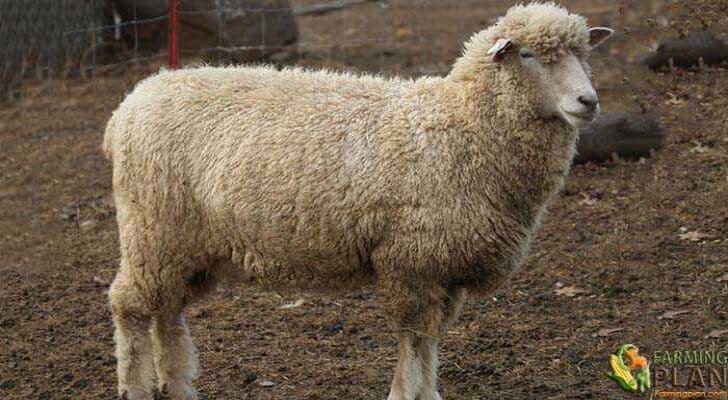The Rambouillet sheep originates from the Merino. Evidence indicates that the Merino originated in Asia Minor in the 8th century BC, then appeared in North Africa, arriving in southern Spain led by the Phoenicians. It was from Spain, precisely that merino took great importance and also in worldwide distribution. This Rambouillet breed is in the field as Merino Rambouillet.
In the 18th century, the Spanish Merino was introduced to France to a section called Rambouillet and the Merino Rambouillet appeared. In 1765 the first merinos arrive in Germany from Spain, these originated the Merino De Saxony and Merino Electoral, of small size, remarkable finesse in the wool and late precocity, smooth skin and fleeces heavier than those of its Spanish ancestors.

The Rambouillet descends entirely from the Spanish Merino. In fact, it is the French version of the Merino developed when Louis XVI imported 386 Spanish Merinos in 1786 for his Rambouillet estate. Although the name of the city is from France, the race owes much of its development in Germany and the United States.
Rambouillet sheep is a breed of Iberian origin, widespread in the E.E.U.U. and northern Mexico. It is the result of the cross of the Merino Vermont type C (smooth) and of the Ohio and Delaine.
In addition, it has a very extensive breeding stage, so that sheep can give birth in two seasons, even in autumn with spring mating. It is characterized by being prolific, achieving good weight gains and having high yields of wool. You May Also Like To Read Guirra Sheep.
Characteristics of Rambouillet Sheep
Rambouillet sheep is a large breed of hard, vigorous, elegant bone. It also produces fine white wool, covering the entire body except for the face. The head of this breed is of medium size implanted and balanced in relation to the body, the free face of wool around and under the eyes. The muzzle and eyes have a thin silky fur cover, the lips are thick and pink, free of dark spots.
In animals with horns, only accept the rams, the horns are open and thick, amber and with spirals with marks. In animals, acorns are accepting the vestiges without objection. The neck is free of wrinkles and well implant on the thorax. For their parts, the ribs are of great thoracic capacity. Avoid narrow animals. The good ribbing of the ribs.
It has a straight and long spine, covered with muscular masses. The legs are long with good aplomb, muscle legs, well round, with deep hips. The legs have amber hooves without excessive pigmentation. In addition, it produces a wool of creamy white color, fleece dense wool free of color fibers and undesirable.
Within the herd avoid animals with uneven and brittle fleece. The skin of this species is usually pink. Rambouillet sheep possess many desirable traits that have led to their inclusion in crossbreeding programs to improve lamb production. The males of this species weigh between 90 and 140 kg. While the females weigh around 65 and 80 kg.
There are characteristics that exclude this breed and therefore should not select animals that have:
- Avoid animals with spots on the fleece, with wrinkles on the skin, with black spots on the ears and on the legs.
- Animals with thick fleeces, with the appearance of other breeds.
- Avoid animals with physical problems, or with inferior physical development and do not register “criollo” type animals.
- You May Also Like To Read Grey Troender Sheep.
Food
Rambouillet sheep’s diet includes feeding with haymaking, corn silage, and cereals. However, this breed has no food restrictions and is quite resistant. They can feed in open spaces, so the grass is not the fittest, but just as they can survive with it. You May Also Like To Read Greyface Dartmoor Sheep.
Usage
Rambouillet sheep are a dual-purpose breed, uses and raises by the production of its wool. Also because it serves to cross with other species.
Special Feature
Rambouillet sheep is a breed of bad meat producer. It fits very well to arid conditions and produces a dense fleece of wool-free of color or undesirable fibers. Weak lambs, sensitive to cold and rain. It adapts better to climates and dry terrain. It is not demanding in its food, it is rustic. Very wide breeding season.
High yields due to low wooliness and cleaning of fleeces. In low and humid areas they present foot problems. The Rambouillet is a dual-purpose sheep, producing a desirable channel and good fine wool.
Rambouillets are large, robust and long-lived with a strong flock instinct. The Rambouillet is the “backbone” of the American sheep industry, forming the basis of most Western Cordillera herds and was bred in the E.E.U.U.
Conclusion
The Rambouillet breed is a sheep that was developed in France and has been grown for many years. This article will provide you with information about the history of this type of sheep as well as how they are raised today. If there is anything else you would like to know about these fascinating animals, please contact us! We have plenty more resources on our website where we go into further detail on all things related to the French Merino.
As A Reference: Wikipedia.


